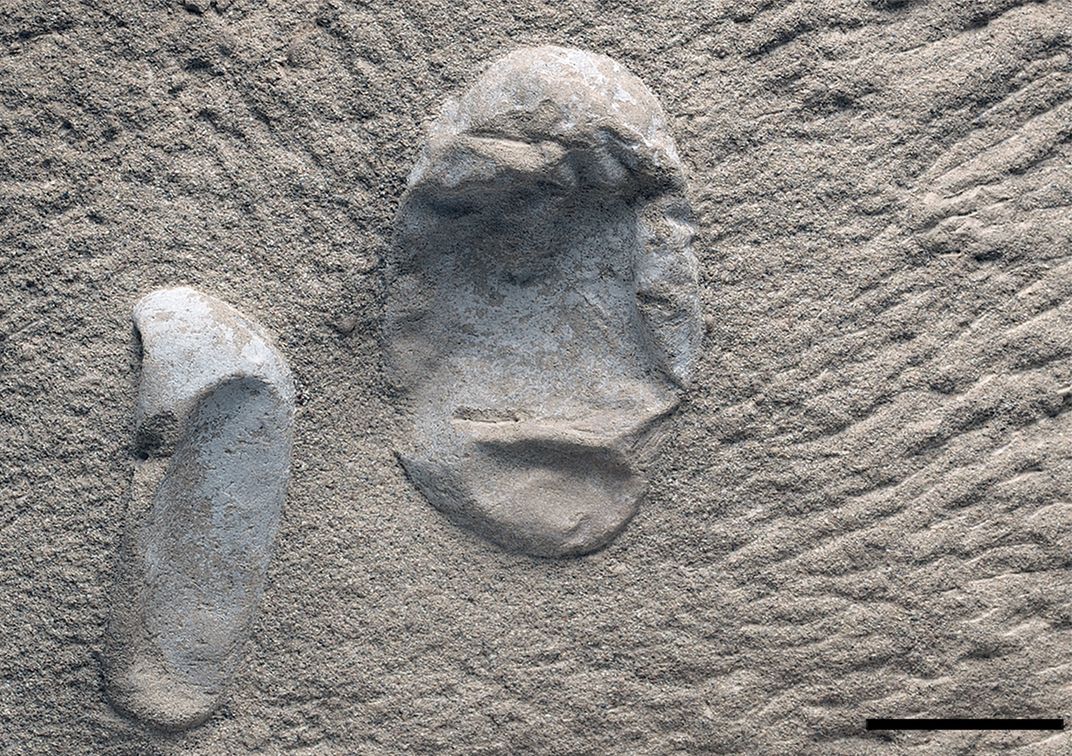Cache of 120-Million-Year-Old Fossilized Pterosaur Eggs Found in China
Some of the eggs contained embryonic remains, offering unprecedented insight into the pterosaur’s early life phases
/https://tf-cmsv2-smithsonianmag-media.s3.amazonaws.com/filer/28/51/28511f56-0501-4500-ab37-49d44b907518/wang6hr.jpg)
Pterosaurs are rarely preserved in the fossil record. These reptiles soared through the skies more than 100 million years ago, but the light bones that helped them fly break down easily with time. Their soft-shelled eggs are even harder to find; until recently, only 11 had ever been discovered. But as Reuters reports, paleontologists in northwestern China recently hit pterosaur pay dirt when they discovered a trove of 215 fossilized pterosaur eggs. Even more remarkably, 16 of these eggs contained partial embryonic remains, allowing scientists to glean unprecedented insight into the pterosaur’s development.
The cluster of eggs, described recently in the journal Science, was found at a site in the Xinjiang Uygur Autonomous Region. All of the fossils belong to the species Hamipterus tianshanensis, a large pterosaur with an elongated skull, sharp teeth and a wingspan of about 11 feet. The eggs are estimated to be 120 million years old, and the cache represents the first time that scientists have discovered pterosaur embryos preserved in three dimensions.
“We want to call this region ‘Pterosaur Eden,’” Shunxing Jiang, a paleontologist at the Chinese Academy of Sciences, tells Reuters.
The eggs were fossilized in lake sediments, which show signs of disturbance by fast-moving water, according to Michael Greshko of National Geographic. Because of this, researchers hypothesize that storms flooded a pterosaur nesting site and dragged the eggs into the lake. And this may have happened more than once over time. The eggs were preserved in four distinct layers within the sediment, leading scientists to believe that Hamipterus, like birds and turtles of today, repeatedly returned to the same nesting site—and, on occasion, lost their eggs to inclement weather.

Researchers were able to glean other insights into pterosaur breeding. As Alessandra Potenza reports for the Verge, scientists believe that pterosaurs only laid two eggs at a time, so the large quantity of eggs found at the site suggests that that the creatures converged to lay their eggs together. The shells of the eggs were soft and surrounded by a thick inner membrane—much like the eggs of modern-day snakes and lizards. And like snakes and lizards, pterosaurs probably buried their eggs.
It was the embryos, however, that yielded the most surprising discovery. Though many paleontologists had believed that pterosaurs could fly not long after they were born, the Hamipterus eggs revealed that in late-stage embryos, the forelimbs—which would have been crucial for flying—were less developed than the hind limbs. This suggests that Hampiterus newborns “were likely to walk on the ground, but were not able to fly in the sky,” Xiaolin Wang, also a paleontologist at the Chinese Academy of Sciences, says in a statement.
If Hamipterus babies could not fly, they “probably needed some parental care,” the authors of the study write. Indeed, amidst the trove of fossilized eggs, palaeontologists found the remains of an individual that is estimated to have been about two years old at the time of its death. This little pterosaur was not yet fully developed, supporting the idea that “pterosaurs had long incubation periods,” Wang said.
Not all experts agree with the study’s conclusions, however. David Unwin, a paleobiologist at the University of Leicester, tells the Verge’s Potenza that late-stage pterosaur embryos found elsewhere in China and in Argentina had well-developed wing bones. The newly discovered embryos, Unwin said, looked as though they had only reached the mid-point of their development.
In an article that was published alongside the study, Denis Deeming of Britain’s University of Lincoln in Britain noted that it is “important to be cautious and not to infer too many aspects of the life history of Hamipterus from what remains a limited data set,” Potenza reports.
In the hopes of providing further insight into the pterosaurs early life phases, paleontologists plan to return to the site. They believe that around 100 additional eggs may lie beneath the exposed fossils.
“We know there are more eggs and embryos in the field,” Wang says in the Chinese Academy of Sciences statement, “and we will spend much more time in studying this incredible pterosaur.”